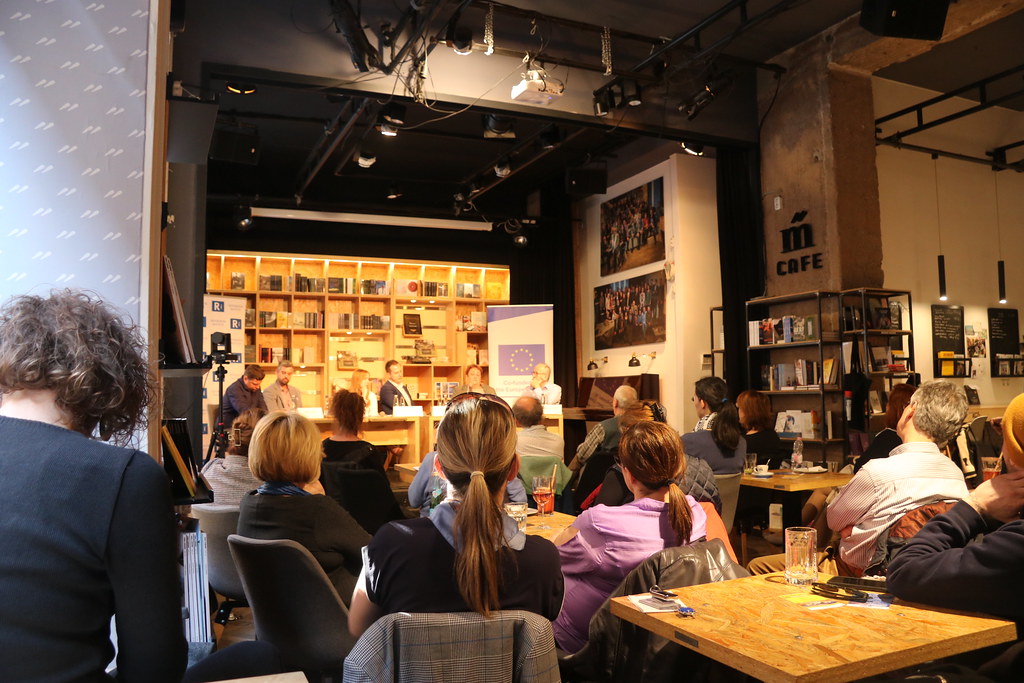

The round table discussion took place as part of the Mindenki Erzsébetvárosa event series.
In the 20th century, during the development of large cities, they tried to ensure that transport served the process of industrialization, however, after the turn of the century, there was an increasing demand for large cities to make room for large green areas, a healthy urban enrironment and the satisfaction of recreational needs. The present discuss was about participants finding the points that make a city livable.
According to Péter Neidermüller, the mayor of Erzsébetváros (Budapest's 7th district), a city can be livable if it is diverse and everyone can acheive their gaols in this society with different interests. He believes that emphasis should not only be placed on transforming transport, but also on transforming people’s way of thinking about how it is worth travelling in big cities. Downtowns need a different type of transport policy than the city itself, but these must be operated in a coordinated manner. According to him, green policy is not about planting trees, but a complete change of attitude, a change that permeats people’s entire lives.
Zsuzsa Gyulainé Tóth, vice-chairman of the legal and interest protection committee of the Magyar Autóklub (Hungarian Automobile Club), pointed out that their own organization is also aware of the need to remove cars from downtown areas, however, in many places in the capital, public transport is not provided at a level that makes this possible. She added that parking system is also not resolved and much more parking lots would be needed in all areas of the city.
According to Samu Balogh, the mayor’s chief of staff, the main problem in Budapest is that the population of the capital is decreasing because more and more people want to move tot he agglomeration. As a result, the number of commuters increases greatly, leading to traffic crisis. The solution to this, however, involves the reduction of green areas. He thinks that we should not make the mistake of compaing Budapest with other cities that are considered livable, as Brussels, for example, faces completely different problems than Budapest. At the same time, according to him, nowadays the city administration puts much more emphasis on involving residents in the shaping of transport policy.
According to Bernadett Bakos, the member of Parliament of the LMP, cyclists and pedestrians are being persecuted in Budapest, which is manifested in the fact that all transport investments are implented without taking into account the needs of cyclists. She thinks that it is difficult to spread tha green policy and to reform transport because many people are not receptive to change, and some motorists never want to switch to using public transport.
According to Gábor Bendik, environmental lawyer of Levegő Munkacsoport (Clean Air Action Group), livable city means that a city has large green areas, the noise level is minimal, and the air is clean. He pointed out that cirrently a significant part of the public areas is occupied by car traffic, which not would be helped if the capital city established new parking lots, as this would only generate even more car traffic. He bevieves that the solution would be if the quality of public services were such that the residents did not have to commutre to get them. He added that one of the main reasons for moving to the agglomeration is the need for green areas.
According to Dávid Király, head of the Budapest Divison of the Republikon Institute, the main problem in the case of Budapest is that all issues affecting the capital become political issues, which are used to forged political capital. He thinks that bicycle transport has already been solved at such a level that it is possible to get anywhere within the capital. He emphasized that in many transport policy issues, it would be most appropriate if results were optainted by consulting the population directly, since they are the ones who are most affected by these issues.
![]()
Co-funded by the European Union. Views and opinions expressed are however those of the author(s) only and do not necessarily reflect those of the European Union. Neither the European Union nor the granting authority can be held responsible for them.















